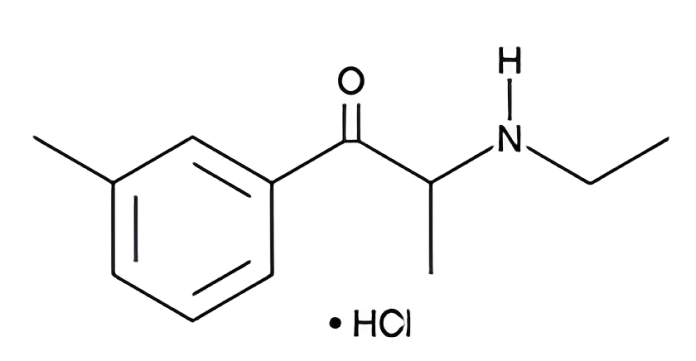When it comes to recreational drugs, 3-MEC is a fairly popular one. Basically, it’s a stimulant with a unique set of properties that we’ll dig into below. This article will provide a full overview of 3-MEC, including its history, dosage, administration methods, user reviews, effects, and potential side effects.
General Information on 3-MEC
Let’s begin our 3-MEC review with general information about this drug. 3-MEC is a synthetic compound. It falls under the cathinone class of drugs, which are naturally occurring stimulants found in the khat plant. To expand, the khat plant is native to East Africa and the Arabian Peninsula. Cathinone has been used for centuries as a traditional stimulant, but its use is now primarily restricted to its native regions due to its classification as a controlled substance in many countries.
It’s known as 3-Methylethcathinone or 3-MEC and has a molecular formula of C12H17NO. The 3-MEC research chemical is usually sold as a white crystalline powder. Often, it’s used as a recreational drug thanks to its stimulant effects. Next in our research chemical review, we’ll cover 3-MEC’s short history.
History of 3-MEC
This drug has a relatively short history. 3-MEC first appeared on the market as a research chemical in 2012. At that time, it wasn’t widely used. In the following years, it gained popularity as a recreational drug. At first, the 3-MEC research chemical was sold along with other legal drugs as a legal alternative to banned substances. Sellers listed it online under various brand names. However, as with many research chemicals, the long-term effects of 3-MEC are unknown. It’s currently a controlled substance in many countries, so be aware of local regulations and restrictions if you’re seeking legal highs.
Dosage and Administration
The dosage and administration of the 3-MEC research chemical vary depending on the user’s tolerance and intended effects. Following the proper dosage instructions is crucial to lowering the risk of side effects or overdose. Below are some common administration methods.
Oral Administration
Most users commonly take 3-MEC through oral administration. The drug is measured in milligrams, and you can take it orally in capsule or tablet form. The dosage ranges from 50 to 200mg depending on the user’s experience level.
Nasal Insufflation
Another possible method of using 3-MEC is nasal insufflation, also known as “snorting.” In this method, the user would crush up the powder and then snort it through the nostrils. The dosage for nasal insufflation should be lower than oral administration, ranging from about 20mg to 100mg.
Vaporization
Vaporizing 3-MEC is when the user heats up the drug to produce vapor. The vapor is then inhaled. This method is less common than oral administration or nasal insufflation. Plus, it’s more challenging to dose accurately.
Suppository
The suppository administration of the 3-MEC research chemical is also possible but rare. This administration method is when the user inserts the drug into the rectum. It’s crucial to get the dosage right as it can be hard to change the dosage once the suppository is inserted.
Redosing
Redosing means taking additional doses of 3-MEC after the first dose has worn off. It’s crucial to wait for the onset of the first effects before redosing to avoid overdose. Generally, redosing isn’t recommended, especially with relatively new substances like 3-MEC. The redosing frequency and dosage depend on the user’s tolerance level and the intentional effects.
User 3-MEC Reviews
User reviews of 3-MEC reveal very different experiences. Some report a positive experience, while others report negative side effects. No matter what, you should cautiously approach user reviews, as experiences are completely subjective. Some users describe 3-MEC as a euphoric and energizing drug, while others report feeling anxious, jittery, and irritable.
Onset of Effects
The onset of the 3-MEC research chemical depends on how it’s taken. For instance, oral administration typically takes longer to take effect than nasal insufflation, with effects starting to kick in after 30-60 minutes. Users feel the effects of nasal insufflation within minutes, but they also wear off faster than oral administration. Vaporization and suppository administration have a faster onset of effects than oral administration.
Euphoria
Many users of 3-MEC report feeling euphoric after taking the drug. They describe the feeling as intense and pleasurable. During this phenomenon, users feel a rush of positive emotions. People also report feeling more friendly and talkative while experiencing euphoria. However, some users have reported negative side effects, such as increased anxiety or paranoia when experiencing this effect.
Enhanced Focus
Another common effect reported by users of 3-MEC is improved focus. Users report feeling more attentive and able to concentrate better while under the influence. This effect may help those who need to complete tasks that require a lot of mental effort. However, it’s worth noting that some users have reported experiencing difficulty focusing or a sense of jitteriness.
Increased Energy
Increased energy is another effect that users of 3-MEC commonly report. Users have reported feeling more alert, awake, and energized after taking the drug. This effect can be useful for those who need extra energy to complete tasks. However, some users have reported feeling overstimulated or restless, and others have experienced difficulty sleeping after taking the drug.
Anticlimax (“Comedown”)
The anticlimax or “comedown” of 3-MEC can be unpleasant for some users. It’s the period after the drug’s effects wear off, and users may experience exhaustion, depression, and irritability. The duration of the anticlimax varies depending on the user’s dosage and frequency of use. Some users also report experiencing a hangover-like feeling the day after taking 3-MEC.
Potential Side Effects of 3-MEC
Like any drug, 3-MEC can produce side effects. These depend on the user’s dosage and frequency of use. Some common side effects of 3-MEC include the following
- Increased heart rate and blood pressure
- Dilated pupils
- Dry mouth
- Sweating
- Muscle tension
- Difficulty sleeping
- Anxiety, paranoia, and agitation
- Headaches
- Nausea and vomiting
- Chest pain
- Seizures
- Psychotic episodes
As mentioned, the 3-MEC research chemical is a relatively new drug with unknown long-term effects. The drug’s safety profile hasn’t been extensively researched, and there are potential risks associated with its use. Seek medical attention if you experience severe side effects.


